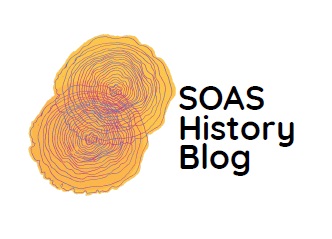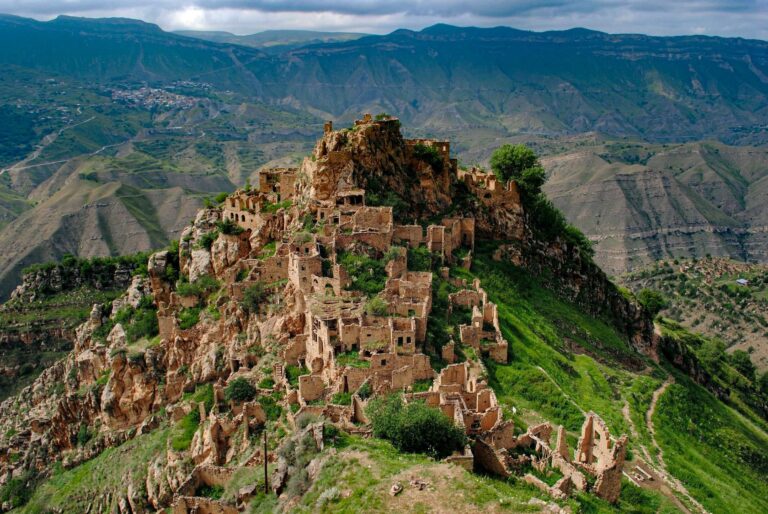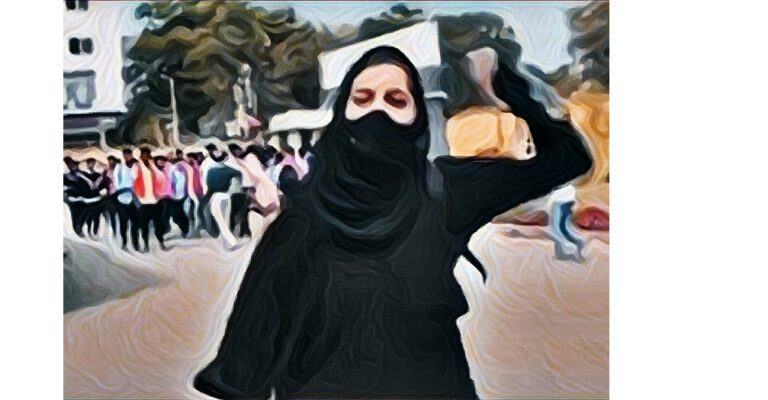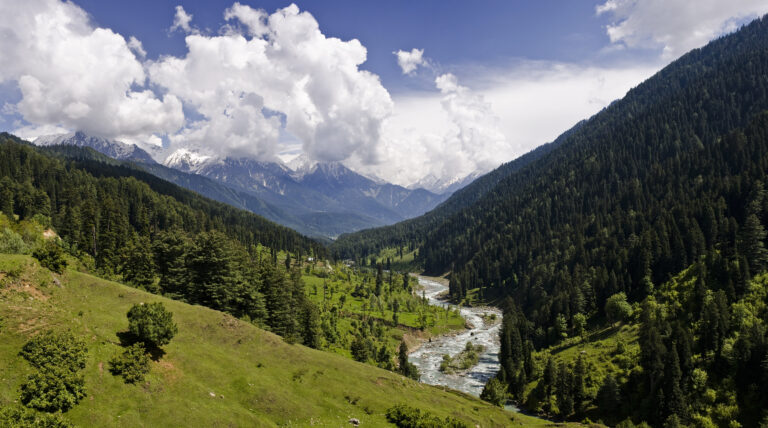Poetry as History Analysis: Seeking Ancient Egypt’s Urban History in Percy Shelley’s Ozymandias
by Shawn Lowe
I met a traveller from an antique land,
Ozymandias, Percy Bysshe Shelley, 1918.
Who said—“Two vast and trunkless legs of stone
Stand in the desert. . . . Near them, on the sand,
Half sunk a shattered visage lies, whose frown,
And wrinkled lip, and sneer of cold command,
Tell that its sculptor well those passions read
Which yet survive, stamped on these lifeless things,
The hand that mocked them, and the heart that fed;
And on the pedestal, these words appear:
My name is Ozymandias, King of Kings;
Look on my Works, ye Mighty, and despair!
Nothing beside remains. Round the decay
Of that colossal Wreck, boundless and bare
The lone and level sands stretch far away.”

Percy Shelley’s ‘Ozymandias’, published in 1818 in The Examiner under the pen name Glirastes, is a poem about the fascination of a Pharaoh’s statue centred in a desert landscape. It describes the pieces of the wrecked sculpture in the barren lands of Egypt. However, one could say that it tells us more than that and also gives us a new avenue of gaining historical insight: through the reading of literary works such as this sonnet. ‘Ozymandias’ examines the issue of the ‘acquisition’ of ancient Egyptian artefacts by external imperial and colonial powers, which dismantled prime characteristics of the ancient city. It further describes the secondary characteristics of the city, while also portraying how hegemonic world powers dismantled the city and acquired the artefacts for themselves due to fascination; a fascination shared by Shelley, which prompted the writing of ‘Ozymandias’ in the first place. Finally, it opens up for the reader of history questions about urban planning and the occupations of city dwellers at this time. Although Shelley’s work is open to criticism of historical and geographical inaccuracies, the poem nevertheless gives us a unique tool for the analysis for Egypt’s urban past and the impacts on the study of urban histories in an era after colonial pillaging.
Contextualising ‘Ozymandias’ and the Eurocentric Viewpoint
The statue which resides in the land Shelley describes, is the depiction of Rameses II (commonly referred to in Greek as Ozymandias), who had ruled over Thebes from 1279 to 1213 BCE (MacGregor, 2011, p. 105) during the New Kingdom era which began roughly from 1552 BCE (Metz, 1990, p. 10). This statue was one of two, which originally stood at one of the entrances of the Ramesseum, Ramesses II’s mortuary temple, which was constructed to celebrate his many achievements. It contained four colossal statues of himself, a temple, a palace and many other treasures (MacGregor, 2011, p. 106). MacGregor in his book A History of the World in 100 Objects compares the temple in size to that of four football pitches (MacGregor, 2010, p. 106) and Tignor in his book Egypt: A short History informs us that the Ramesseum was the first object visitors saw once they crossed the Nile (Tignor, 2011, p. 52). There is a slight reference to a Eurocentric view of Ancient Egypt in the beginning of the poem where it states, ‘I met a traveller from an antique land’ before generally describing the colossal wreck of the statue in question. By using the word ‘antique’, Shelley is trying to say that although old, what was found in the city of Thebes, present day Luxor, was also of value.
According to Gordon Childe’s Urban Revolution one can classify the statue of Ramesses II as a ‘secondary characteristic’ of the city. As opposed to a primary characteristic (such as basic infrastructure), the existence of secondary characteristics, such as monuments ‘not only distinguish each known city from any village, but also symbolize the concentration of the social surplus’ (Childe, 1950, p. 12), showing the unequal distribution of wealth in a city. The size of the monument, originally standing at 57 feet, the fact that the pharaohs benefited the most economically from the cultivation of the land, and that hundreds of unpaid slaves would have worked to build these monuments, reinforce this theory of urban spaces. Because of this colossal size and the many valuables contained within it, Thebes had become a target for theft both from the population of the city itself and also from exterior powers in the colonial period. Tomb robberies had become so commonplace from the period of the Old Kingdom onwards that Egyptian rulers started to have themselves entombed in the western desert in Upper Egypt rather than within the enormous, and very obvious, pyramids (Tignor, 2011, p. 66). Nevertheless, these precautions could not have accounted for the ransacking of Thebes by the colonisers, who would come in the late nineteenth century.

Shelley’s poem was first published in the London journal The Examiner in 1818, the same year in which the upper half of the Young Memnon statue of Ramesses II arrived in England after being acquired, or in other words stolen, by Giovanni Battista Belzoni and his workers. It now stands in the British Museum along with other artefacts from ancient Egypt, such as the mummy of Hornedjitef (MacGregor, 2011, p.3). This was a time of acceleration of the colonial takeovers on the African continent that had been ongoing since the initial Portuguese infiltration in the fifteenth century. According to MacGregor ‘when [the statue] arrived in England, it was by far the largest Egyptian sculpture that the British public had ever seen, and it was the first object that gave them a sense of the colossal scale of the Egyptian achievement’ (MacGregor, 2011, p. 105). As Said noted, the competing Occidental powers of France and England were mesmerised by this achievement, made solid in stone, which they previously had thought impossible by the ‘inferior’ inhabitants of the Orient (Said, 1979, p. 2). They competed to win the spoils of their spreading colonial influence. What was once, metaphorically speaking, the corner stones of the city in terms of showcasing Thebes’ achievement to its inhabitants of the present and future, had now become a display piece for another power, relegated to Shelley’s description of an ‘antique land’, in a museum. Though Shelley did not refer to it as theft, when we take into account the events of Shelley’s own time and the British interference when acquiring the artefacts of the early Egyptian cities, the mind-set of the colonial powers is quite clearly illustrated.
Shelley’s Poem as a Realisation of Ramesses II’s Monumental Vision
Another aspect of urban history that Shelley’s poem allows us to examine is Thebes’ ability to create a monument that projects its longevity and fame into the proceeding centuries. Thebes’ function as the capital of a military state with imperial leaders culminates in the Ramesseum as a means to celebrate the military victories and other achievements of Ramesses II. The poem refers to an inscription under the statue: ‘My name is Ozymandias, King of Kings: Look on my works, ye Mighty, and despair!’ (Glirastes, 1818, p.24). This is not a fabrication on Shelley’s behalf for added symbolism to this piece of artistic expression, this is drawn from the work of Greek historian Diodorus Siculus (c. 90 BCE – c. 30 BCE), called the Bibliotheca historica. Siculus’ work claims the inscription runs thus: ‘I am Osimanduas King of Kings; if any would know how great I am, and where I lye, let him excel me in any of my works’ (Waith, 1996, p. 154). This was incorporated in a poem of Shelley’s literary friend Horace Smith (1779-1849), who wrote ‘I am great Ozymandias, saith the stone, The King of Kings; this mighty city shows the wonders of my hand’ (Waith, 1996, p. 155). One might conclude that in order for there to be a celebration of achievements and triumphs, there must have been threats towards the Kingdom and existing structures that must have helped the city to overcome said threats. However, neither the inscription nor the poems refer to examples of victory, the latter two only quoting the inscription itself. As noted in Harold Carter’s Urban Origins, the existence of circular elements in the Egyptian hieroglyph for a town symbolises a wall or a set of external defences, concluding that the origins of cities lay in the need for people to gather together in search of protection (Carter, 1977, p.22). These records of the statue and the inscription on the monument therefore imply knowledge of the pharaoh’s achievements without the need for lengthy details.
For the modern reader, Shelley’s poem can be used to invoke such questions. According to Helen Chapin Metz’s book Egypt: A Country Study, the New Kingdom era of Egypt had reached the peak of its power with the government being reorganised into a military state with an administration in the hands of the pharaoh and his chief minister. After Thutmose III’s (1479-1425 BCE) establishing of the New Kingdom empire, the pharaohs that succeeded him had to frequently engage in defence of the state from the Nubians and the Hittites (Metz, 1990, p.10). In this period ruled over by imperial leaders, Ramesses II would also have needed to take this into consideration. At the battle of Kadesh in 1274 BCE, one of the most well-known military conflicts of the ancient period, Ramesses’s forces of 20,000 were able to defeat the Hittites’ 19,000 (Tignor, 2011, p. 64). The account of this battle is written in hieroglyphics on the walls of the Ramesseum, where a bust known as Ozymandias stands as a reminder to all those who enter the mortuary temple. Shelley’s English-language description helped enshrine in the new public’s mind the notion of Ramesses II as a powerful leader of a significant military state, and left it also with a warning, hence Shelley’s line ‘look at my work, ye mighty and despair’ (Glirates, 1818, p.24). Such grand statues and mortuary temples like Ozymandias and the Ramesseum were created for the purposes of posterity, and Shelley amplifies this aim.

Critiquing the Use of Poems as Historical Sources
On a more critical note, one should be aware that, ironically, ‘Ozymandias’ describes a statue and terrain which Shelley never stepped foot near himself. He also chose to focus solely on the ruins and remains of the city, emphasising that a fragment of history in a short sonnet can easily be criticised for bypassing a lot of for the sake of poeticism. For example, let us take the line ‘Tell that its sculptor well those passions read’ (Glirastes, 1818, p.24). Shelley displayed an understanding of the occupational specialisations of the city with reference to a pharaoh and a sculptor – which are jobs which must exist in a city such as Thebes with its many secondary characteristics (Carter, 1977, p 15). However, this is basic knowledge. The existence of sculptors in ancient cities to make these pieces of art is an easy deduction. It tells us nothing about the life of the ancient Egyptians as do other written texts. It does not accurately tell us about the sheer number of the workers who helped to create just this statue, which MacGregor’s book helps to illustrate. Nor does Shelley leave space to consider pondering the materials, which MacGregor claims was granite from the Aswan quarry weighing 20 tonnes, which was floated down the Nile to Luxor and then placed at the Ramesseum for the more detailed stonework to be done (MacGregor, 2010, p.107). Nor does Shelley’s poem give us the background as to how sculptors were able to practice their time-consuming profession. In Gordon Childe’s work Urban Revolution, some of this is answered: ‘About 5,000 years ago irrigation cultivation (combined with stock breeding and fishing) in the valleys of the Nile, the Tigris-Euphrates and the Indus had begun to yield a social surplus, large enough to support a number of resident specialists who were themselves released from food-production’ (Childe, 1950, p.8).

Furthermore, Shelley’s lack of knowledge of the geography of the site has bolstered misconceptions of the Egyptian landscape. He describes a scene in which ‘The lone and level sands stretch far away’ and ‘Near them, on the sand, Half sunk, a shattered visage lies’, which accompanies the description of trunkless legs and little else remaining (Glirastes, 1818, p.24). Believing that the poem, was an actual depiction of the statue, Waith informs us that his own travels to the areas revealed the statue mentioned by Siculus was actually standing in one piece, even stating that he was confused as to why there was no shattered visage sunk in the sand. Furthermore, the remains of the mortuary temple (Waith, 1996, p.154) contradict Shelley’s poetic assertion that ‘Nothing besides remains’ (Glirastes, 1818. P.24). Waith suggests that this early nineteenth century fantasy landscape may have conflated the two seated statues of Amenhotep III, which are broken, and lie close to the Ramasseum (Waith, 1996, p. 156). Furthermore, Shelley’s poem depicts the desert as a harsh and lifeless space, which Tignor disputes: ‘Deserts and cataracts had served Egypt well in the Old Kingdom era. They had isolated the inhabitants from the rest of the world and allowed the diverse people living in the Nile River basin to create a unique culture and to form a deep sense of their Egyptian identity’ (Tignor, 2011, p. 52).
This location of Thebes, as with any city, created a unique and shared understanding and identity, which corresponds to Lewis Mumford’s description of a city. A city is ‘an aesthetic symbol of collective unity’ (Mumford, 1937, p.29), which Shelley does not convey in his poem. For the sake of creating a romantic scene of ruins, Shelley effected the collective European ideas about the ancient population and location of the Ramesses II statue. Therefore, in terms of informing us on urban issues, one could say that there is always limitations when it comes to the use of poems as they are not as informative as other documentary or archaeological sources.
Poems as Artefacts
Of course, there are various factors which reduce the poem’s value as an accurate representation of the past. For instance, the choice of format, Shelley not visiting Egypt himself, the incorrect interpretation of source material that inspired the poem, and the bypassing of information as opposed to taking more reliable documents into account. Nevertheless, this poem does reveal some aspects of urban history. The poem reveals the sentiments and motivations of European invaders and their fascination with these objects. It also itself fulfils the aim of the creators of the statue, captivating the imagination of persons living thousands of years after its completion both in the creation of the poem, and then in the poem’s own fame. Therefore, exploring ‘Ozymandias’ as a poem that reflects a particular historical moment offers a unique and revealing way of understanding history and doing historical research.
Bibliography
Childe, G. (1950). ‘The Urban Revolution’. The Town Planning Review, Vol. 21, No. 1, pp. 3-17.
Glirastes (1818). ‘Ozymandias’. The Examiner. No. 524, p. 24.
Macgregor, N. (2011). A History of The World in 100 Objects 2010. London: Allen Lane.
Metz, H. C. (1990). Egypt: A Country Study. Washington D.C: Federal Research Division, Library of Congress.
Mumford, L. (1937). “What is a City”. Reprinted in The City Reader, pp. 59-64.
Said, E. (1979). Orientalism. New York: Vintage Books.
Sassen, S. (2005). ‘The Global City: Introducing a Concept’. The Brown Journal of World Affairs, Vol. 11, No. 2, pp. 27-43.
Tignor, R. L. (2011). Egypt: A short history. Princeton: Princeton University Press.
Waith, E.M. (1996). ‘Shelley’s “Ozymandias” and Denon’. The Yale University Library Gazette, Vol. 70, (No. 3/4) pp. 153-160.

Shawn Lowe
he/him
Shawn is a third year student at SOAS studying a BA History and World Philosophies Joint Honours Degree. His interests are mostly to do with African and Chinese history, with any ways of adding philosophical thoughts and theories being a bonus. His favourite aspects of theses histories are the inhabitants and the social cultures.
LinkedIn Profile: Shawn Lowe
SOAS History Blog, Department of History, Religions and Philosophy, SOAS University of London







